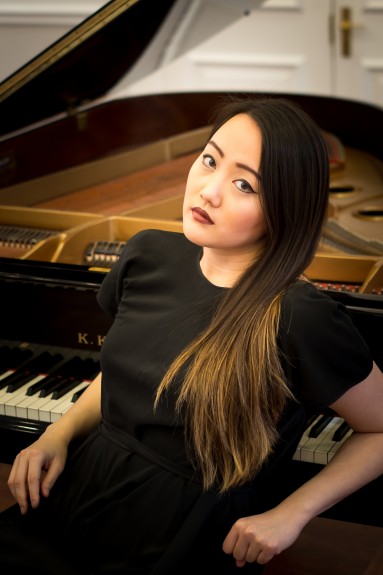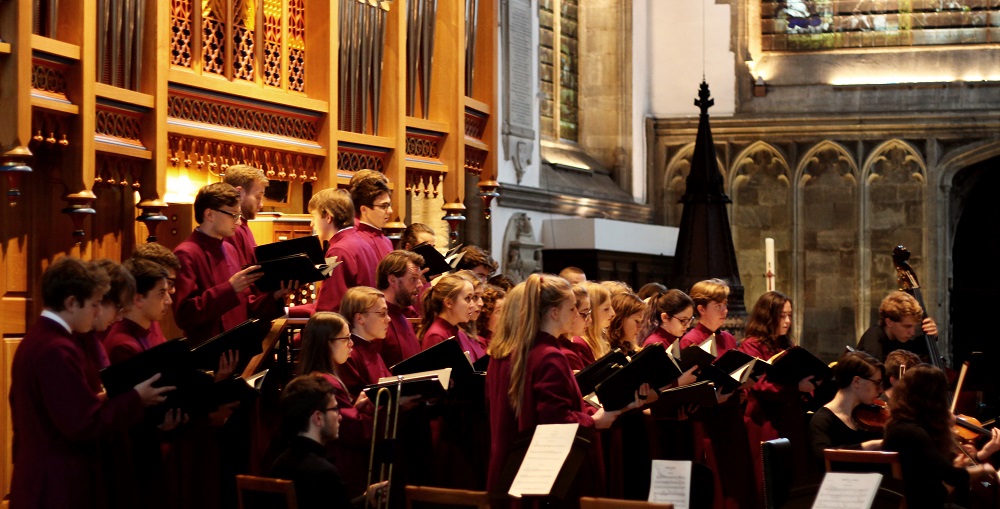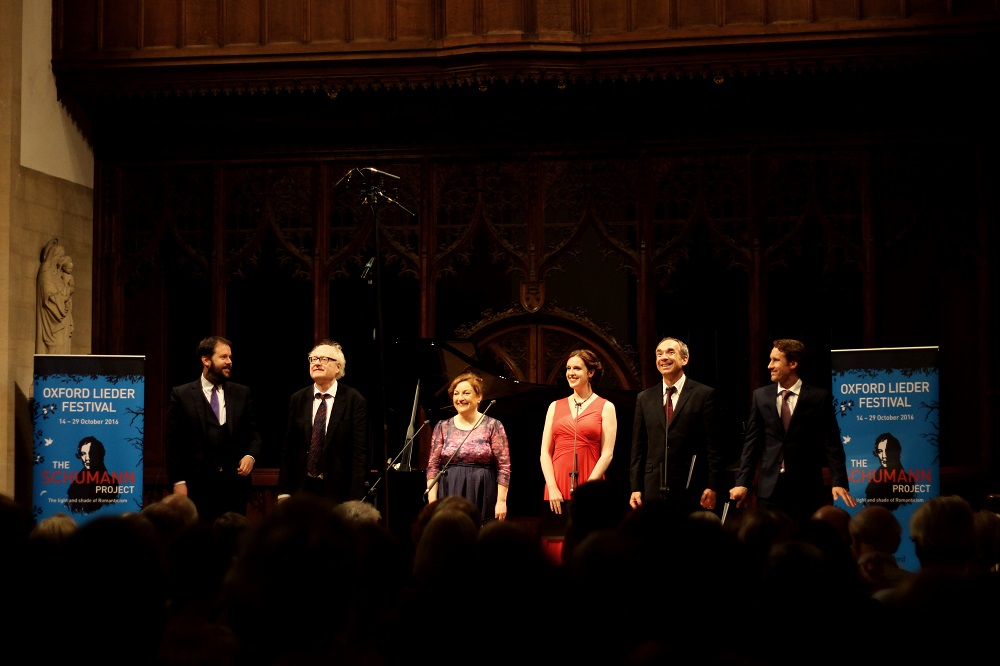It felt oddly disrespectful showing up in time for Schumann's wake on the fifteenth and final day of this year's Oxford Lieder Festival. Having started with the early piano music and many of the chamber works before moving on to Schumann's annus mirabilis of song, 1840, with frequent leaps backwards to influences and forwards to the influenced, pianist Sholto Kynoch’s labour of love reached the troubled final years dogged by whatever that insanity for which Schumann was institutionalised might have been – bipolarity, syphilis, poisoning for the mercury used in its treatment. Fortunately the last two events showcased late and last works of what was mostly an extraordinary serenity given so disrupted an end.
What tragedy there was surfaced in the beautifully planned second half of the Holywell Music Room early afternoon showcase for the young singers and pianists who’d participated in baritone Wolfgang Holzmair’s mastercourse. Schumann’s mostly dark-hued settings of lyrics from Goethe’s Wilhelm Meister were interlaced with Wolf’s more elaborately sombre Mignon songs.
 The two highlights with the most nuance came just before that sequence from the Norwegian tenor Eirik Grotvedt in a rapt “Nachtlied” and engaging lyric soprano Harriet Burns charting the secret rapture of Wolf’s “Anakreons Grab”. Top prize for the most promise in that half of the afternoon would have to go to their pianist, Somi Kim (pictured right).
The two highlights with the most nuance came just before that sequence from the Norwegian tenor Eirik Grotvedt in a rapt “Nachtlied” and engaging lyric soprano Harriet Burns charting the secret rapture of Wolf’s “Anakreons Grab”. Top prize for the most promise in that half of the afternoon would have to go to their pianist, Somi Kim (pictured right).
Requiem for Mignon has none of the darkness in those songs; it’s simple, happy music, and as such made a beguiling sequel to four of Brahms’s Op 17 songs for women’s voices, horns and harp in Merton College Chapel Choir’s Evensong-time concert in its beautiful chapel (the first in Oxford to give rise to the format in other colleges, though in this case the nave of what would have been a huge church was intended but never completed). Sitting in the choir with its impressive 20th century arrangement of medieval glass with the choir and orchestra beyond (pictured below) meant that much of the collective sound went up into the tower and not towards us.
Yet individual colours like those of the clarinets in the Introit and Kyrie of Mozart’s Requiem, and subsequently the horns in the Brahms, did make their mark. Fine soloists were topped by Alice Privett and bottomed by Josep-Ramon Olivé, a graduate of the Oxford mastercourse, Handel Singing Competition winner and the finest baritone the Guildhall currently has to offer; his contribution, in the Requiem for Mignon, was regrettably limited, but impressive all the same. The revelation, at least for me, was the elliptical simplicity of Schumann’s final Requiem; if he wrote it for himself, then he must have been able to find profound peace despite all the horrors of those last years.

The radiance continued in the final concert, held in a favourite venue for great visiting musicians, the light, airy and all-of-a-piece late-Victorian St John the Evangelist on the Iffley Road. The quasi-dramatic sequences of the Minnespiel and the Spanische Liebeslieder, ranging from solos to duets and quartets, date from what by all accounts was a happy stretch before a plunge into depression, a second Wunderjahr in 1849. As with so many of Schumann’s songs, why these aren’t better known is a mystery. They had all the vivacious help in the world from four delightful personalities – soprano Ailish Tynan, mezzo Kitty Whately, tenor James Gilchrist and baritone Jacques Imbrailo.
Kynoch’s own distinct character, making so much of those subtle piano epilogues or final phrases at which Schumann excels, was enriched by another, that of Bengt Forsberg (pictured below by Tom Herring with the other five), for the four hands of the Spanish sequence. Typical of the tireless Kynoch that he should have taken the opportunity with Forsberg to add four of the Bilder aus Osten (Pictures from the East), the spirit of the oriental Eulenspiegel who was their inspiration very marked in the first.

Alongside the sheer joy of such ensemble numbers as the Minnespiel’s “Schön ist das Fest des Lenzes” ("Fair is the Festival of Spring"), there was passing revelation of personal Schumann, above all in “Mein schöner Stern!” ("My beautiful star!"), unusually probing in its harmonic progressions for this group. Gilchrist and Kynoch delicately brought out the full significance of the poet’s “dark clouds” transfigured by the “serene radiance” of the addressee – Clara, obviously. It’s curious that Schumann places the most troubled of the Spanische Liebeslieder first after the four-hand introduction, “Tief im Herzen trag ich pein” (“Deep in my heart I bear my grief”), its character immediately summoned by Tynan. Whately’s slimline poise and Imbrailo’s open baritone sound – the most beautiful of the day, perhaps – both had their apogees further on in this group.
Then it was genius’s knowing when to be simple again in “The Gift of a Grand Piano” (Schumann’s to Clara), and what for many attendees must have seemed like the end of an epic journey still had its impact on the one-day listener. Festivals of this scope need a motivator who’ll go to the ends of the earth for the full works, and a team willing to follow him; in Kynoch and his staff the Oxford Lieder Festival has both. Mahler and Vienna is the theme for next year; already it seems ripe in inception.















Add comment